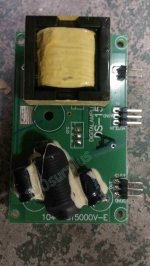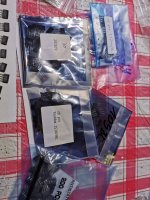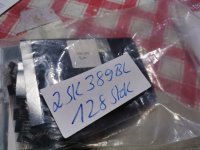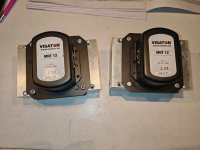Hey Everyone,
Occasionally, I build guitar fx pedals since I'm a musician and I play guitar, bass, keyboards and a Theremin, I thought that building a 4-Knob Tube Driver pedal would be a fun diy project to work on over the Christmas holidays, so, I've been doing some work on the project in the last few weeks, there's a bit of a twist to it though, rather than go through the lengthy process of making a PCB, or vero/stripboard layout for it, I thought I would do something different and use tagboards to mount the majority of the components on, this is only going to be a one-off build so spending the time on making a PCB, or vero/stripboard layout for it doesn't make much sense, I'm not really geared-up to etch my own PCBs and I enjoy a challenge anyway.
I've been working on sone hand-drawn tagboard layouts recently, and I've got the majority of the components laid-out on them, the circuit does use a dual Op Amp IC, such as a JRC4558D, TLO72CP, and other dual Op Amp ICs with the same pinout, so, I'll be using a small piece of vero/stripboard to mount the 8-pin IC socket, which will then mount on one of the tagboards, I've seen this kind of construction done before, Ibanez make a hand-wired TS-808 Tube Screamer pedal where all the resistors, caps, are mounted on tagboards, and to my ears the hand-wired TS-808 Tube Screamer does sound good, using tagboards to mount components is really just an alternative method of circuit construction, my attitude is, life is too short so use whatever method happens to work for you, not against you.
The Tube Driver was originally designed/manufactured by a guy in America named Brent K Butler, I wanted to order a genuine B K Butler directly from him, so I went to his website, got his email address and emailed him about the possibility of ordering a B K Butler Tube Driver direct from him, I got absolutely no response back from him, even after a few years.
I digress, anyway, the Tube Driver is a distortion/overdrive fx pedal that uses a real twin-triode tube to generate an authentic tube distortion/overdrive effect, it does contain a dual Op Amp IC that functions as an input buffer/clean overdrive circuit to overdrive a real twin-triode tube, some Tube Drivers use a 12AT7 tube, others use a 12AX7/ECC83 tube, and some Tube Driver owners have experimented with other twin-triode tubes with the same pinout as the ECC83/12AX7 tube, and B K Butler himself builds Tube Drivers with an additional bias control that kind-of simulates lower gain twin-triode tubes, I tried the bias control mod and didn't really find it very useful.
I will be posting pics of my Tube Driver pedal build, and also tagboard layouts for those interested in building one for themselves too.....stay tuned!!!












































